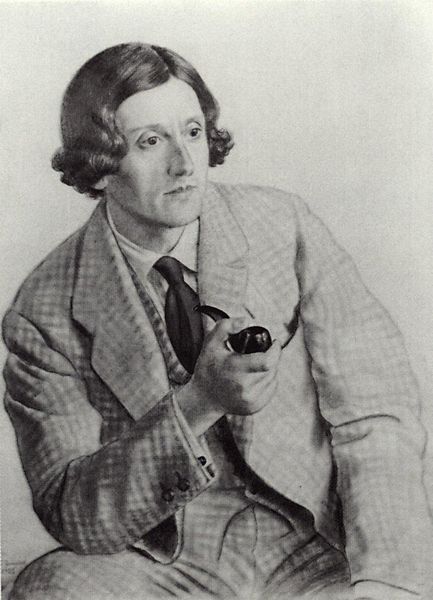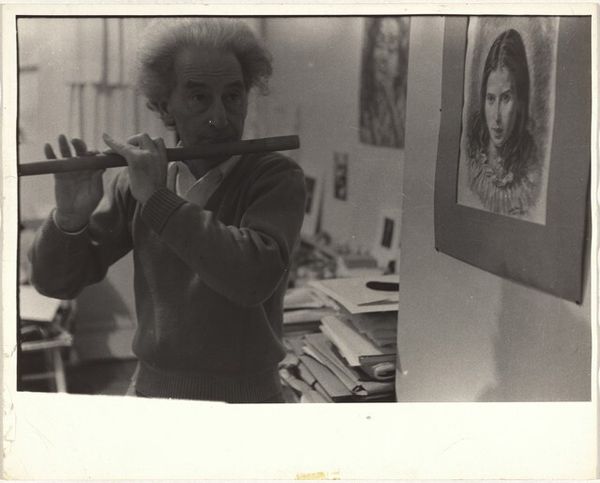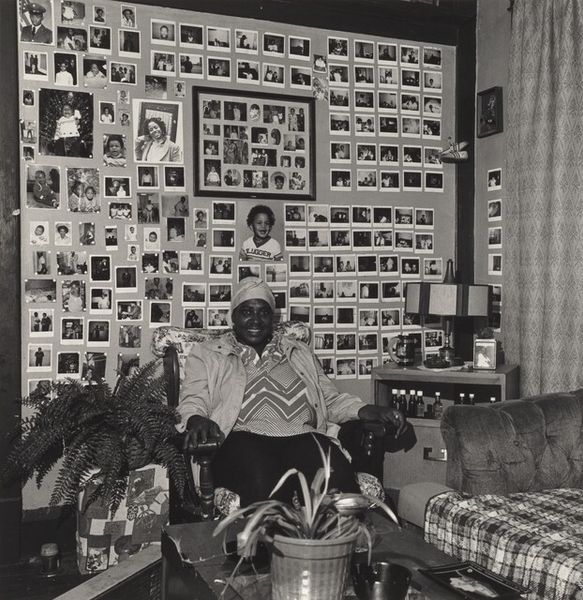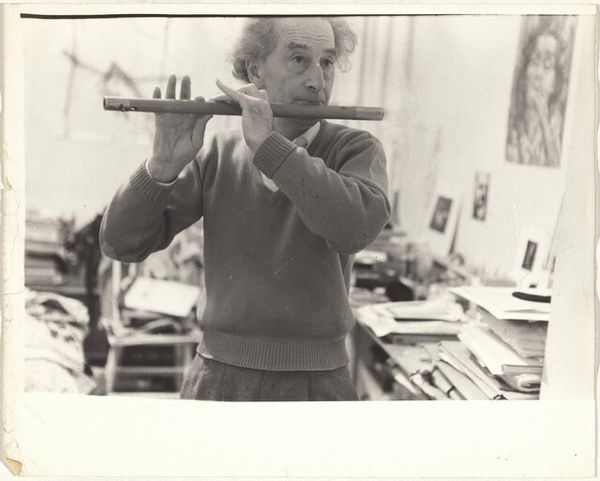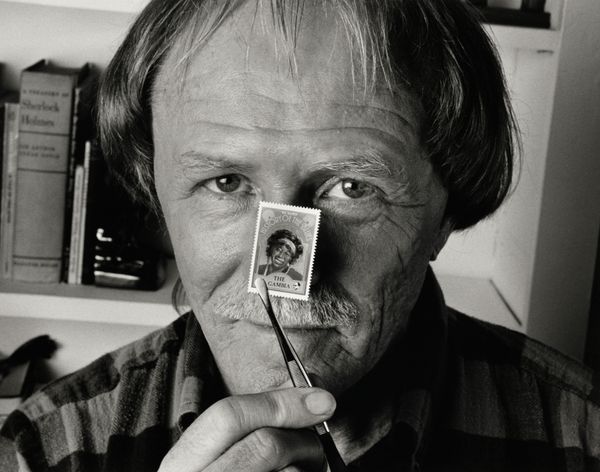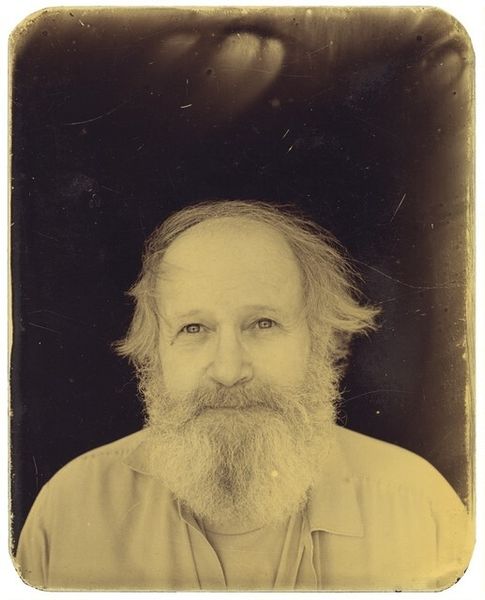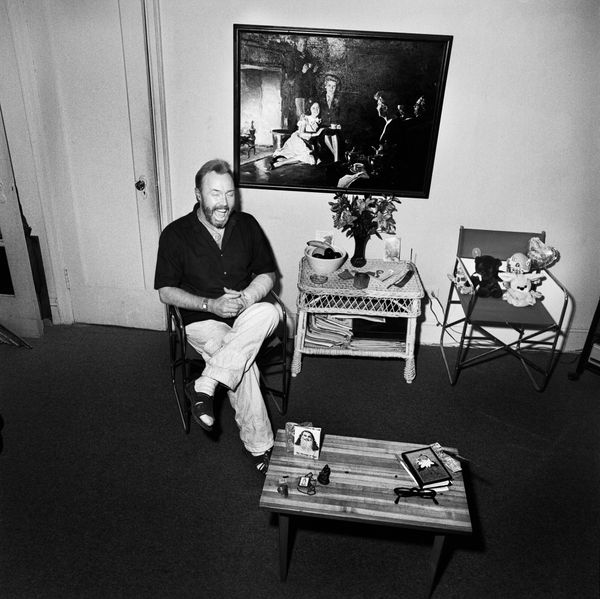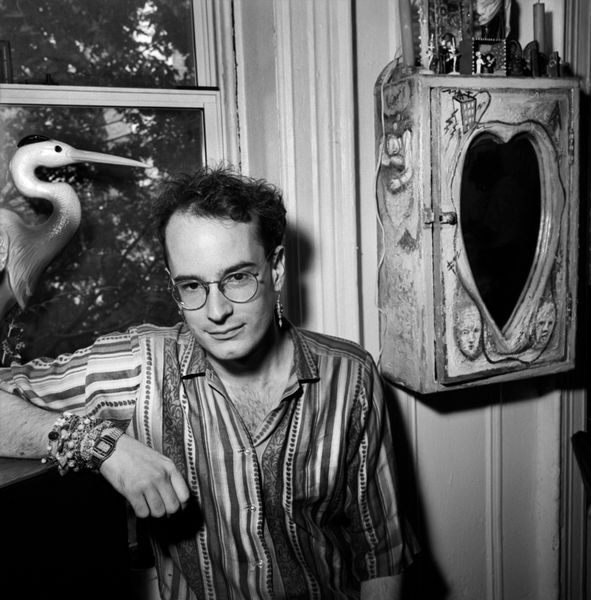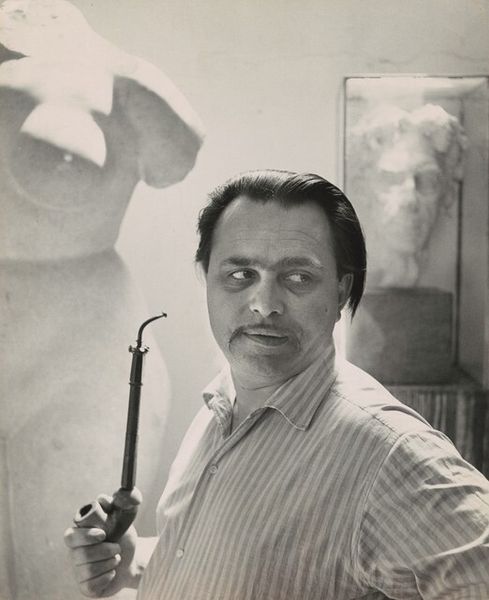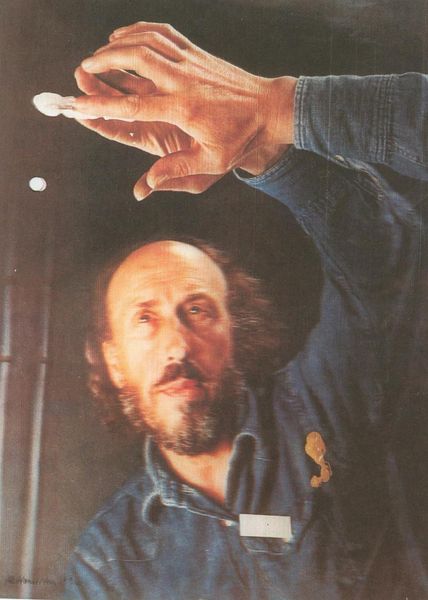
#
black and white photography
#
low key portrait
#
portrait image
#
centre frame
#
portrait subject
#
black and white format
#
black and white theme
#
portrait reference
#
black and white
#
monochrome photography
Dimensions: image: 29.21 × 19.05 cm (11 1/2 × 7 1/2 in.) sheet: 35.56 × 27.94 cm (14 × 11 in.)
Copyright: National Gallery of Art: CC0 1.0
Curator: Richard Gordon’s photographic portrait, “Gary Singer, Santa Cruz”, was taken sometime between 1973 and 1978. What are your initial thoughts on this image? Editor: There's a certain casual intimacy to this shot, isn't there? The low-key, monochrome treatment enhances the textural elements – the man's wiry hair against the smooth paper, the crisp lines of the photo he's holding. There's a rawness in the materials. Curator: Absolutely. The context here is important. Gordon’s work frequently featured fellow artists and figures in the counter-cultural scene of that time, so there's this idea of documenting a specific artistic community. The casual setting gives an unvarnished peek into their world. Editor: I’m struck by the image-within-an-image aspect. He is holding up another black and white portrait—what's that about? And what’s that contrast suggesting about production versus...the artist himself? Curator: It's meta, definitely! He's presenting this second photograph to the viewer and simultaneously highlighting the nature of portraiture itself, and artistic expression as a hall-of-mirrors in that community. It speaks to the role of artists representing artists within their social sphere. Editor: And what does it say, then, that it’s clearly a low-run photograph? It makes me consider what labor went into the physical making of each print and what was available to the artists in that community. Is this a question of material access more than portraiture? Curator: A bit of both, perhaps! It shows resourcefulness but also points to how art scenes are maintained through those material exchanges. The access to equipment and distribution channels all impacted how their work circulated and who was seen. Editor: It makes you think about where this photograph, the photograph that he is holding in the photograph, lives and its relationship to that person! It seems less about pure aesthetics and more about those socio-economic textures. Curator: I agree, focusing on those connections deepens our appreciation for how artists form networks and build cultural capital outside of mainstream institutions. Editor: So, it is a kind of document, maybe a manifesto on artistry in process? Curator: Yes, exactly! Thank you for underscoring the nuances of materiality and production here, It shifts the understanding from pure artistic intent to the structures and networks that empower creative voices. Editor: Definitely a compelling conversation to be had there!
Comments
No comments
Be the first to comment and join the conversation on the ultimate creative platform.
